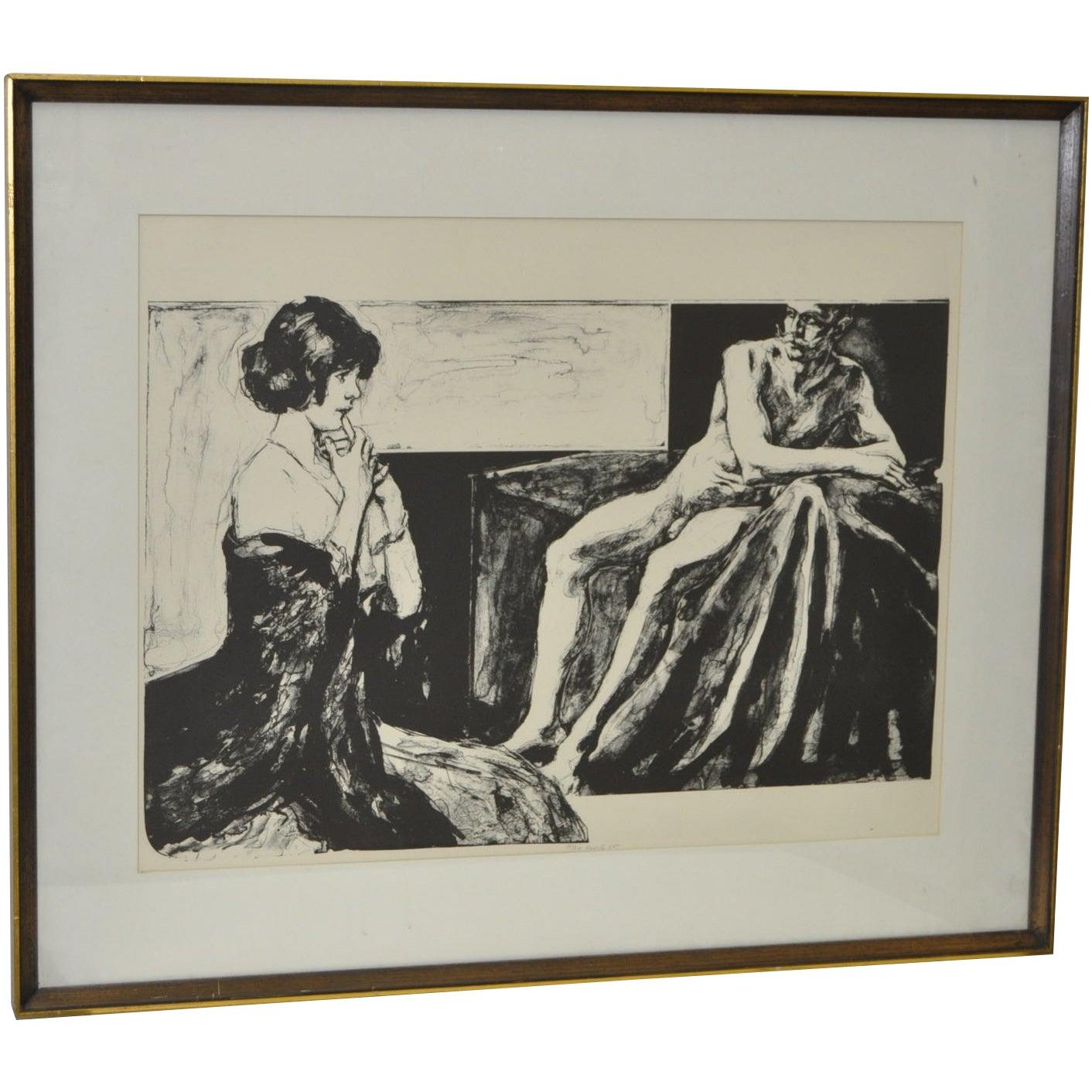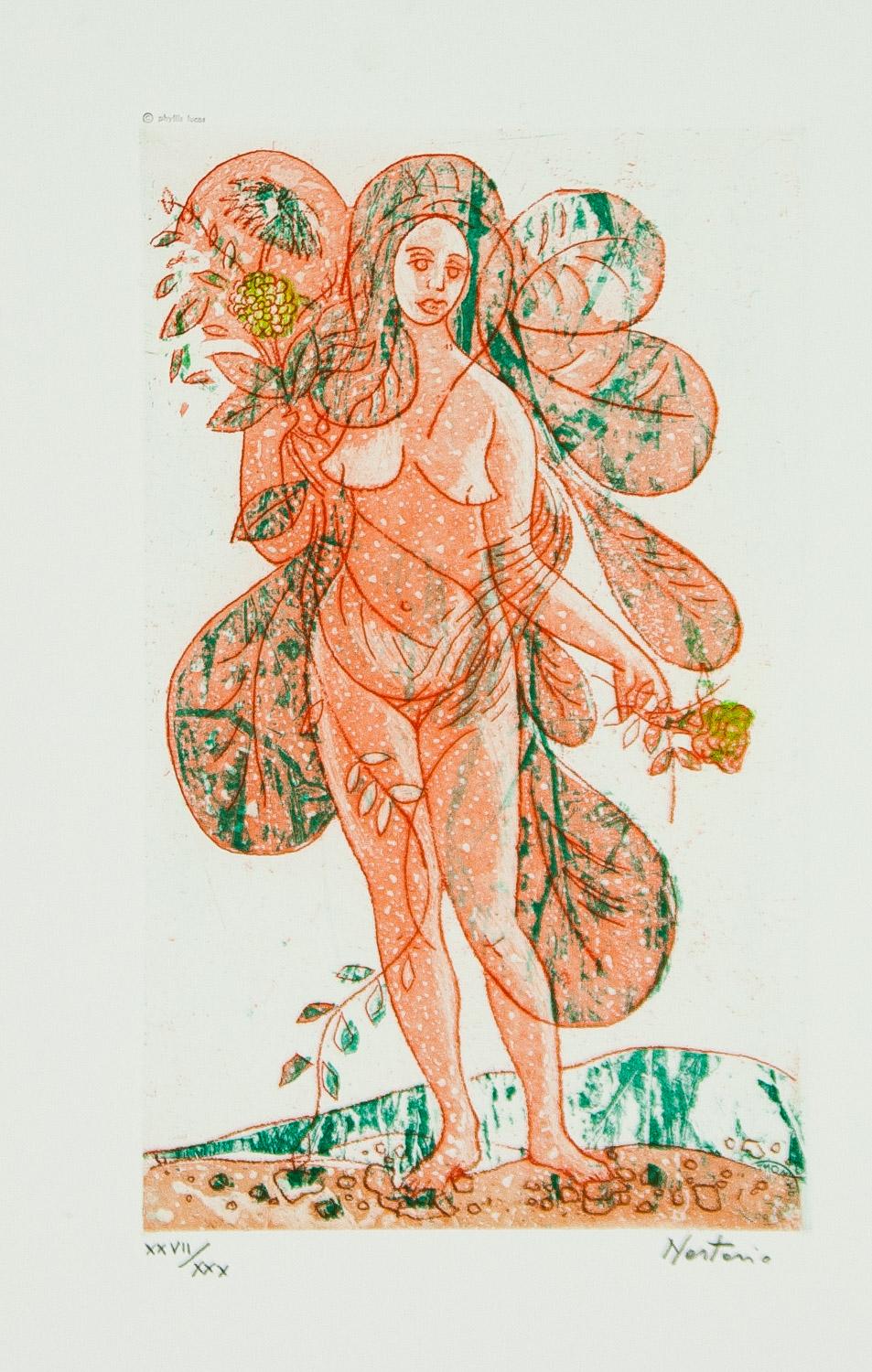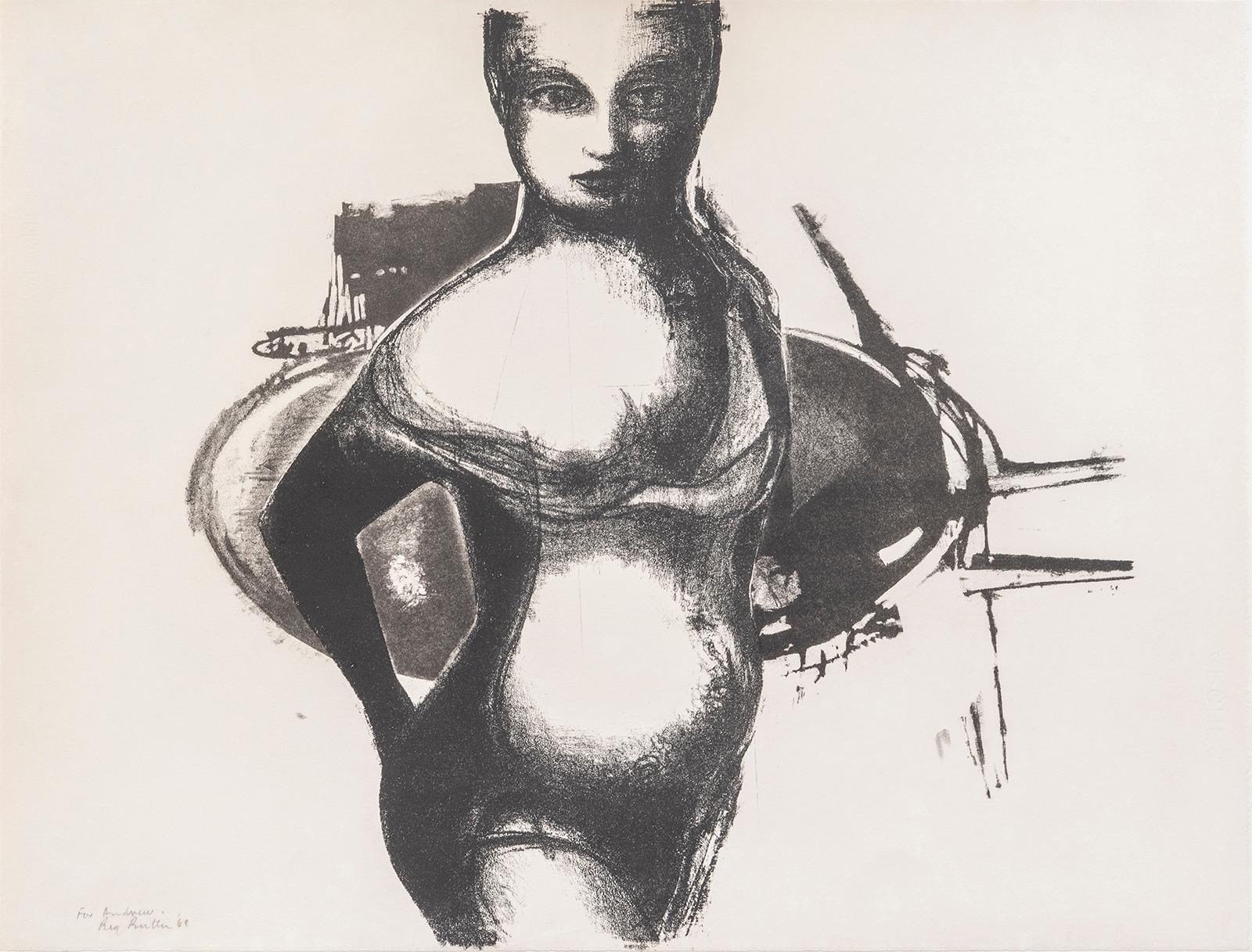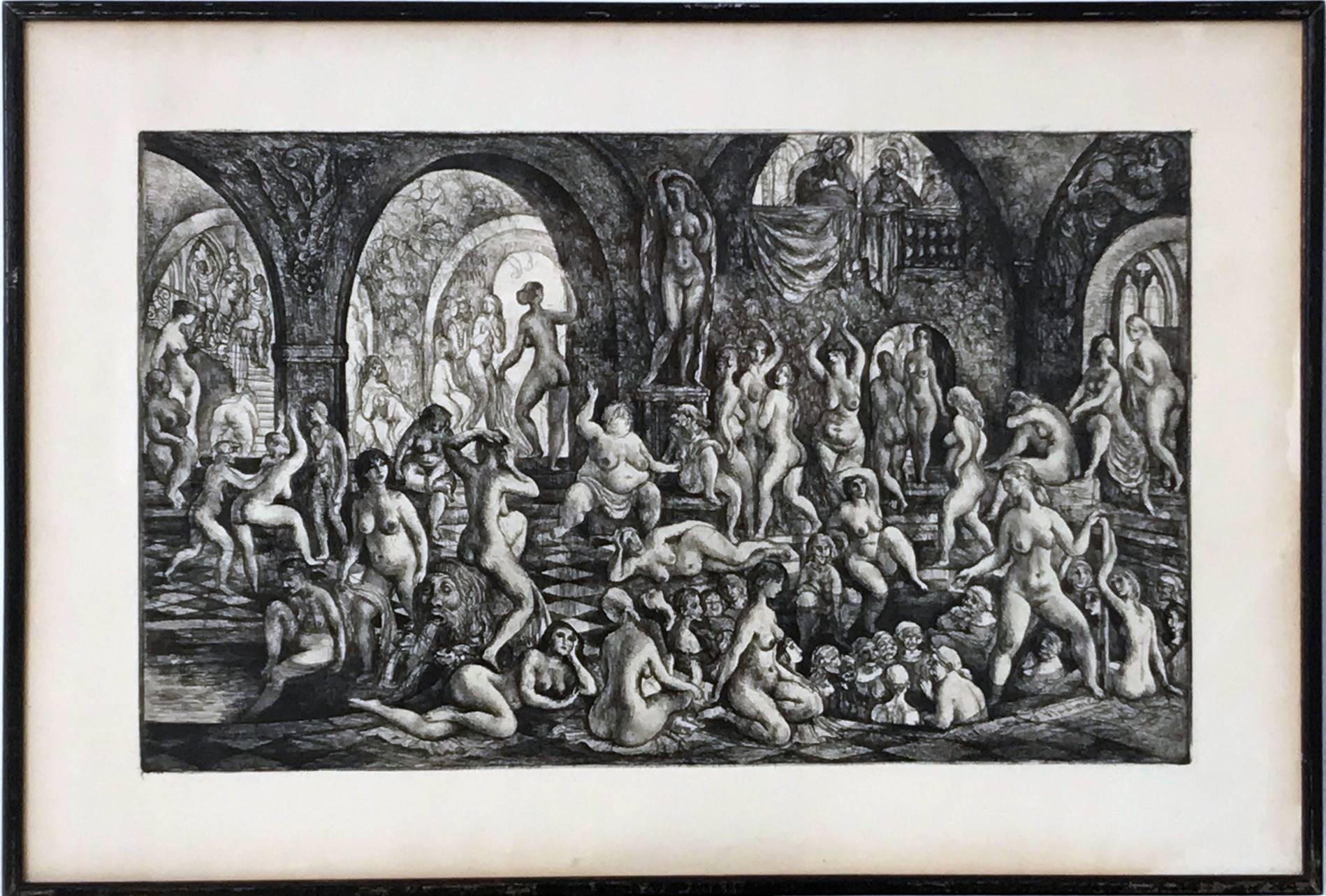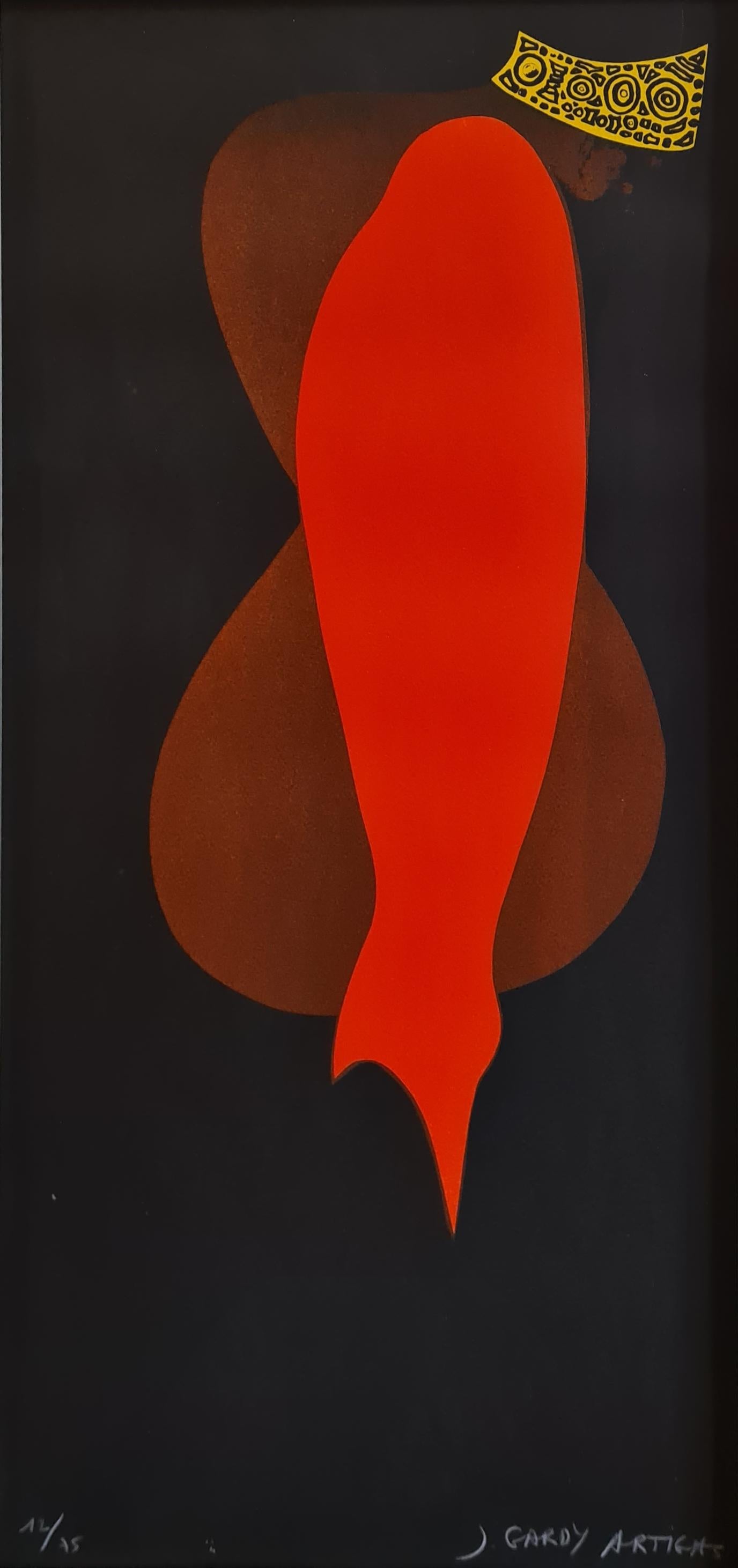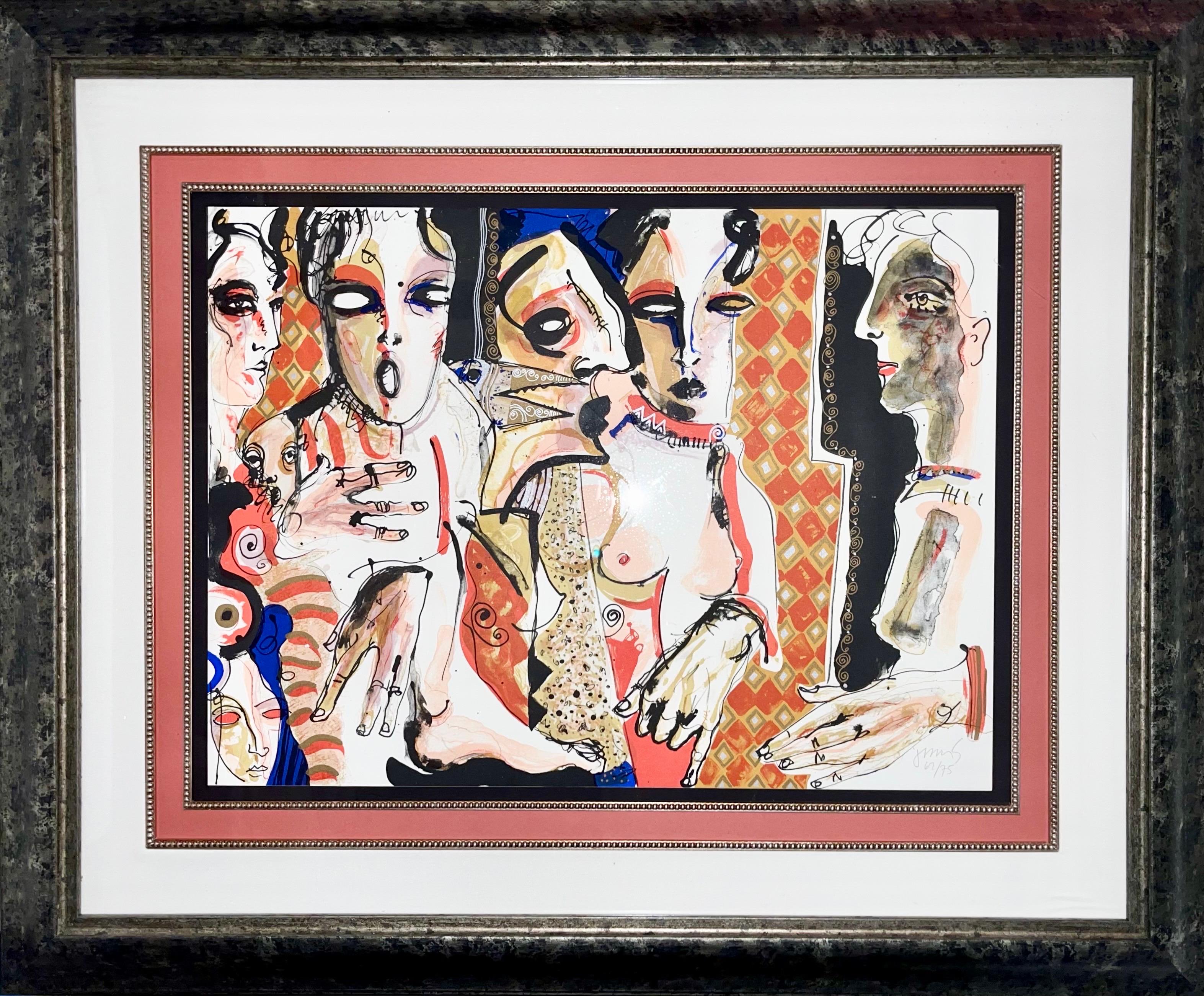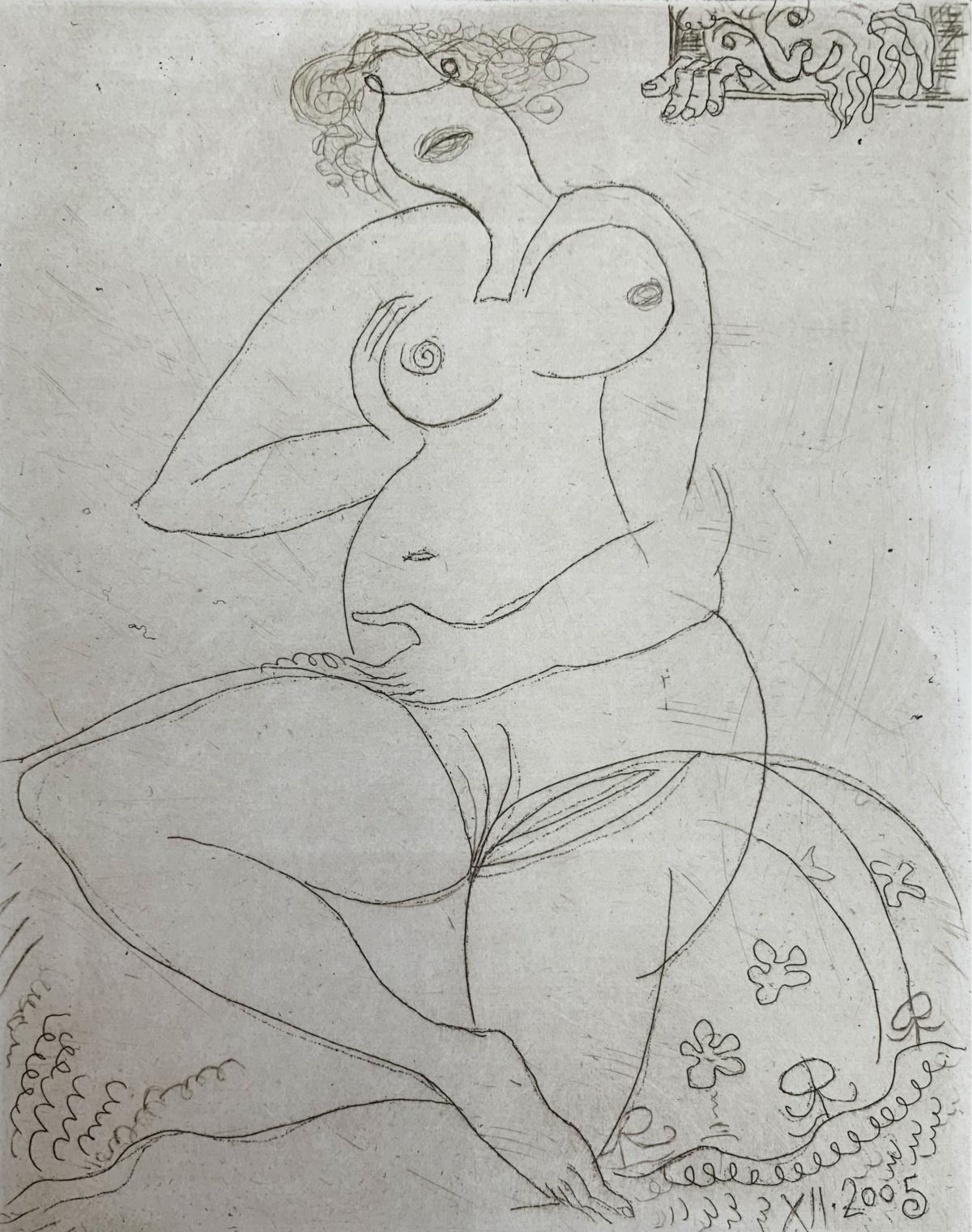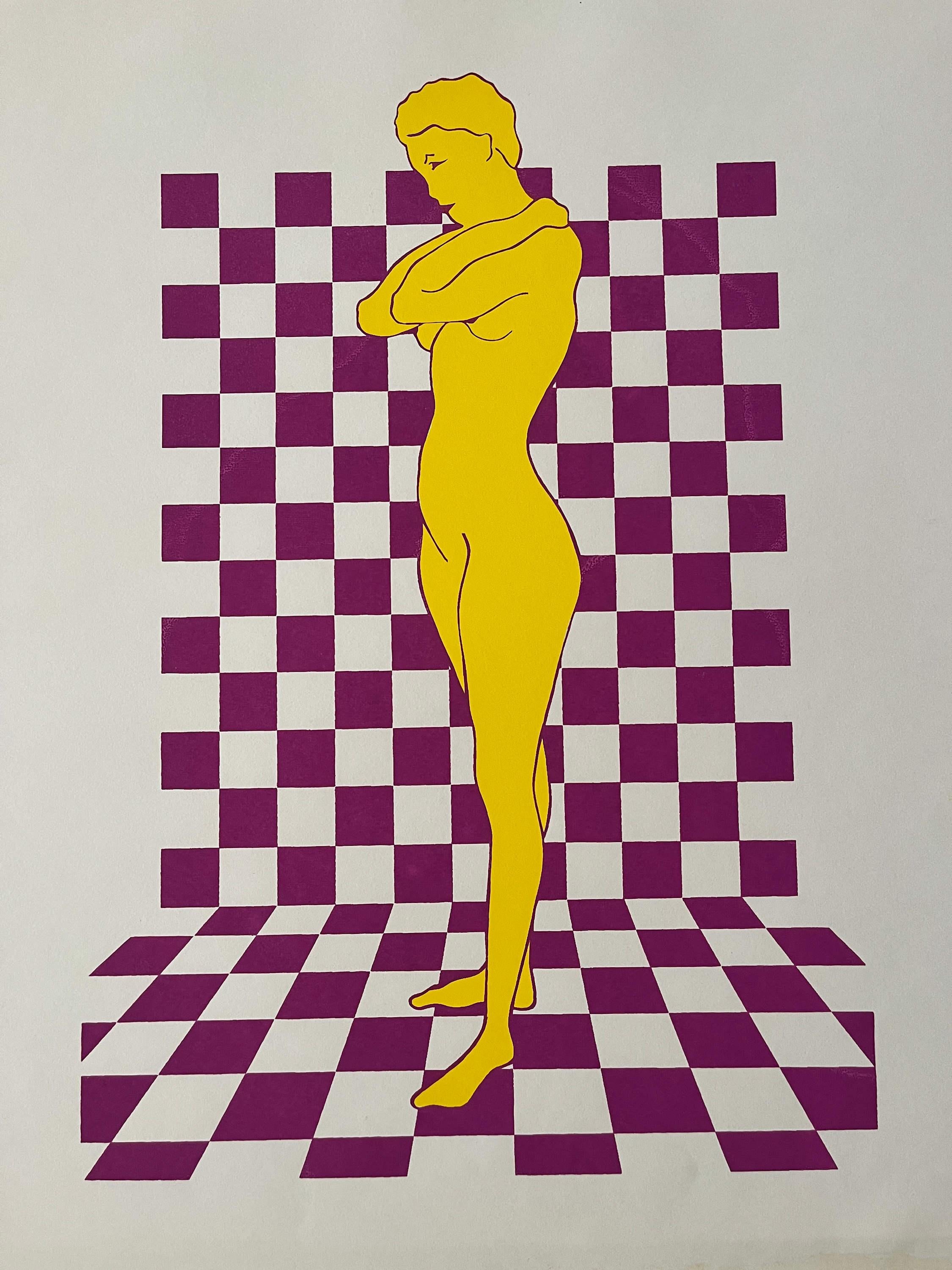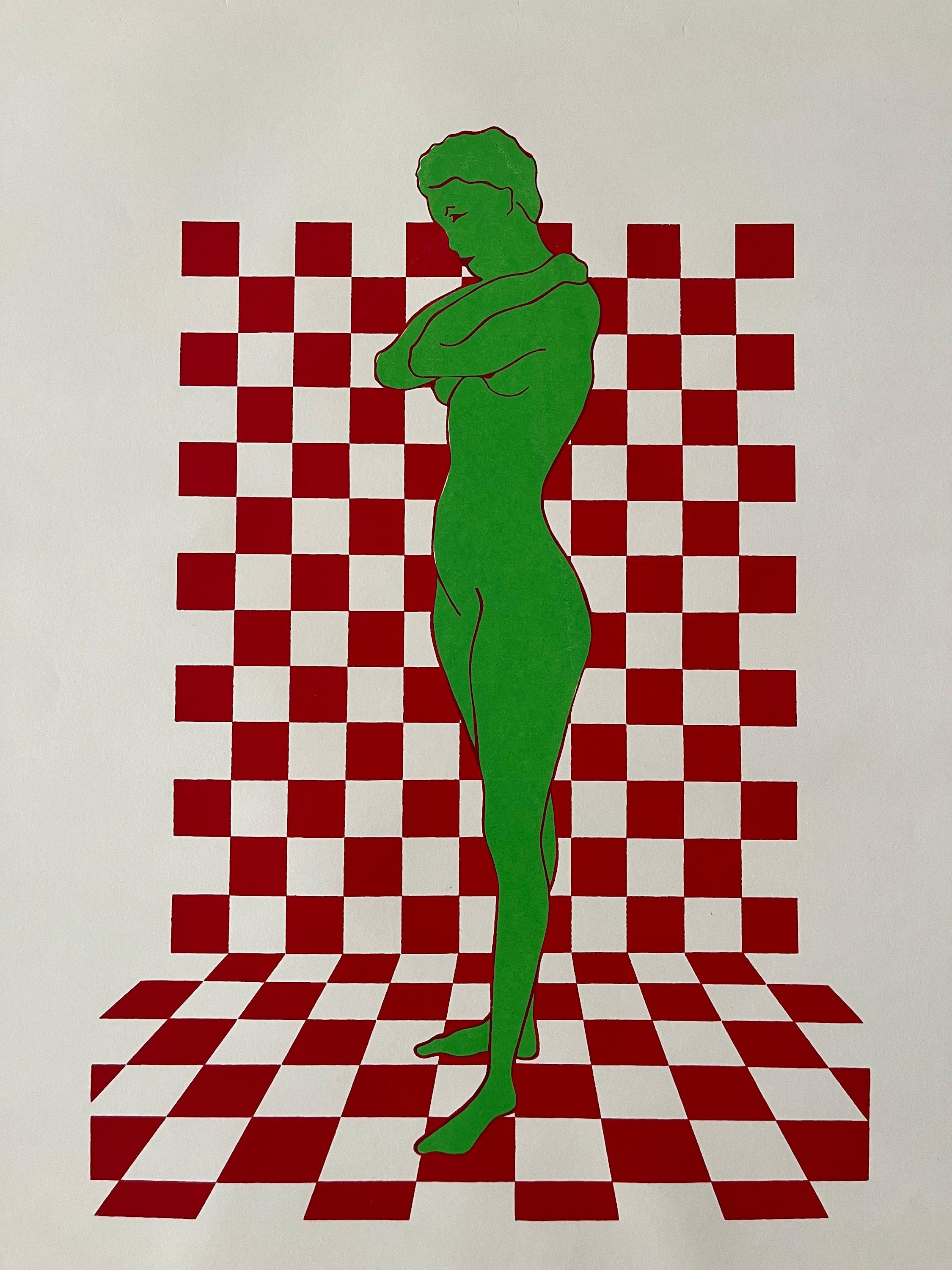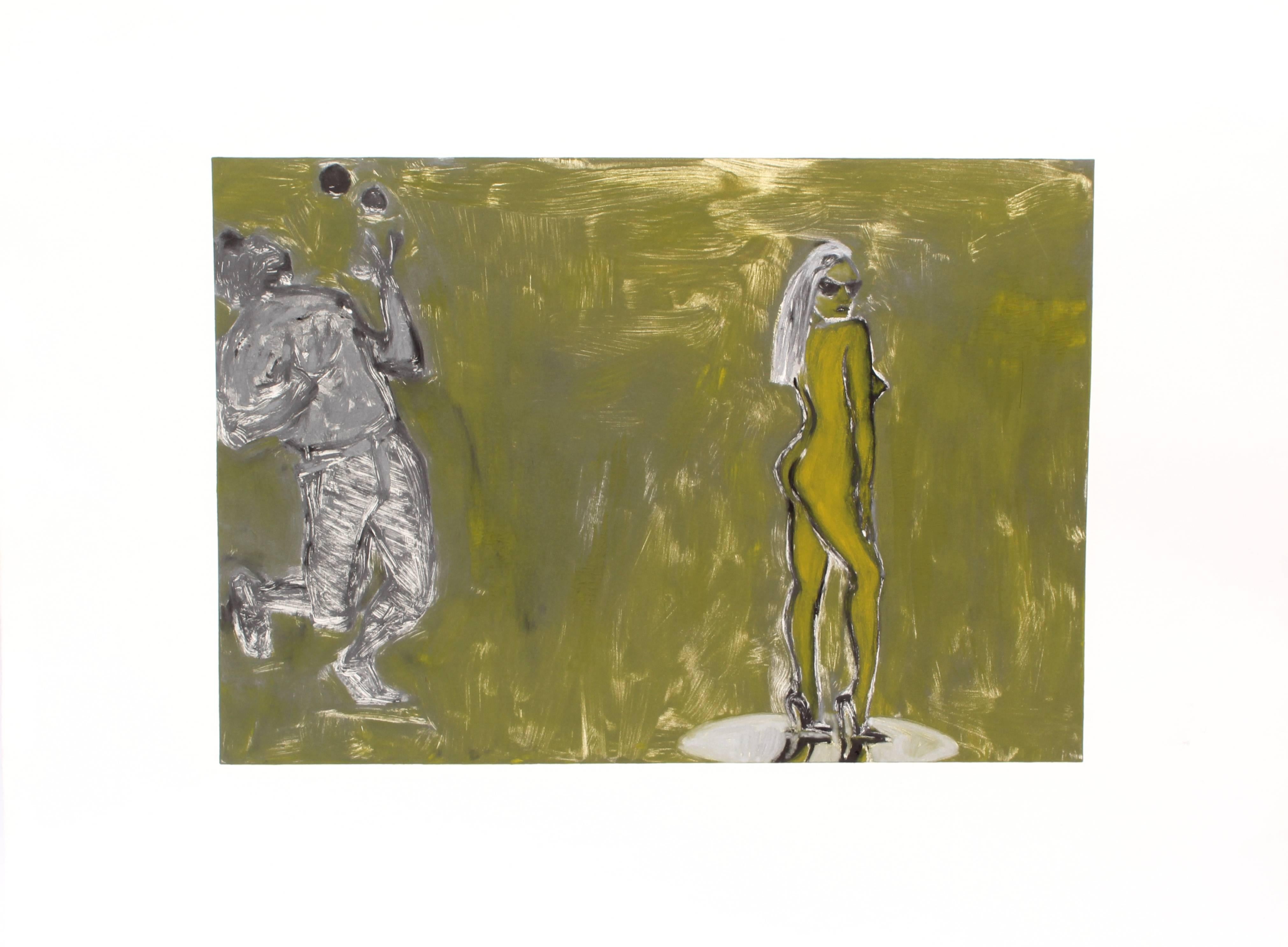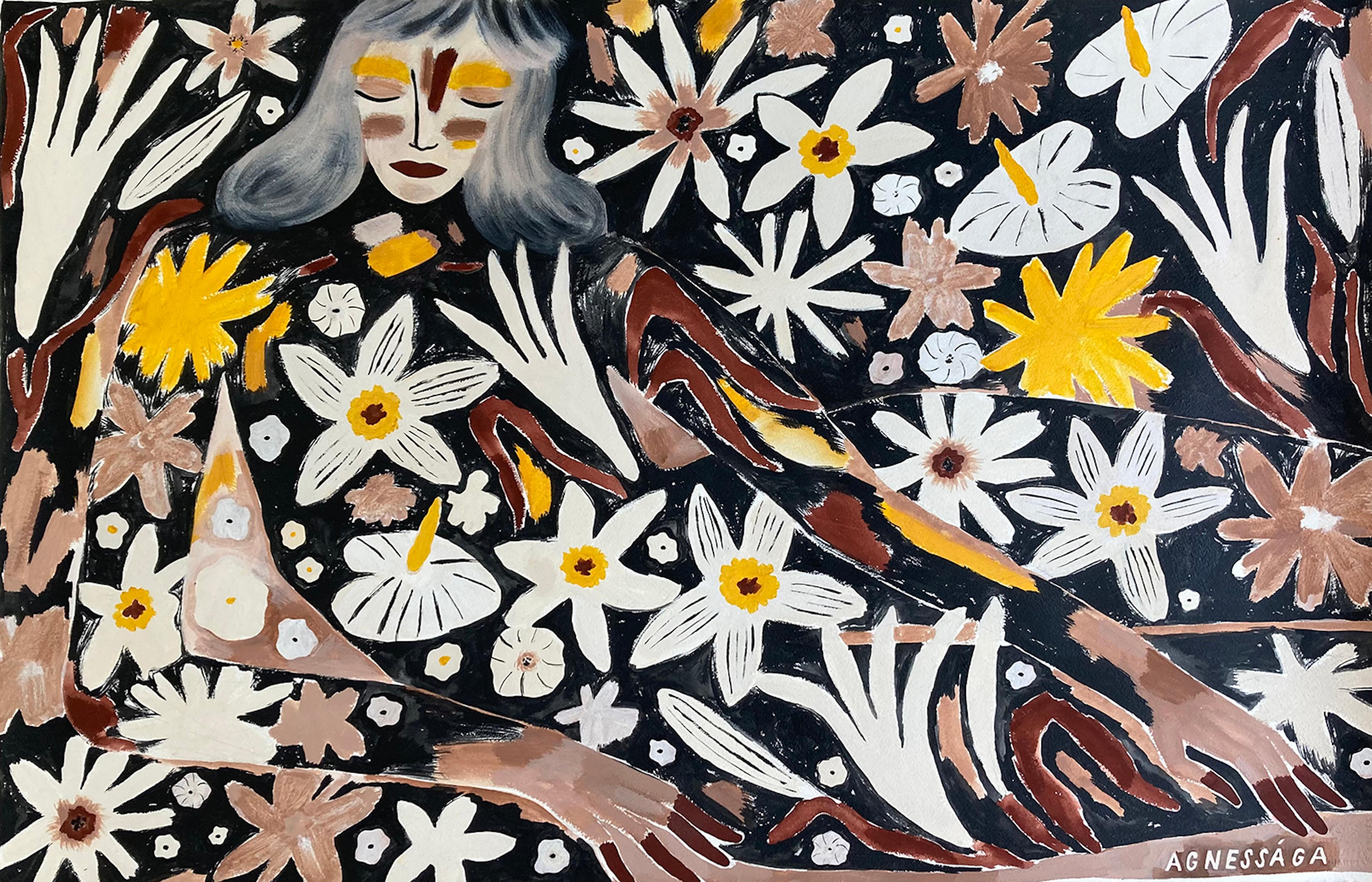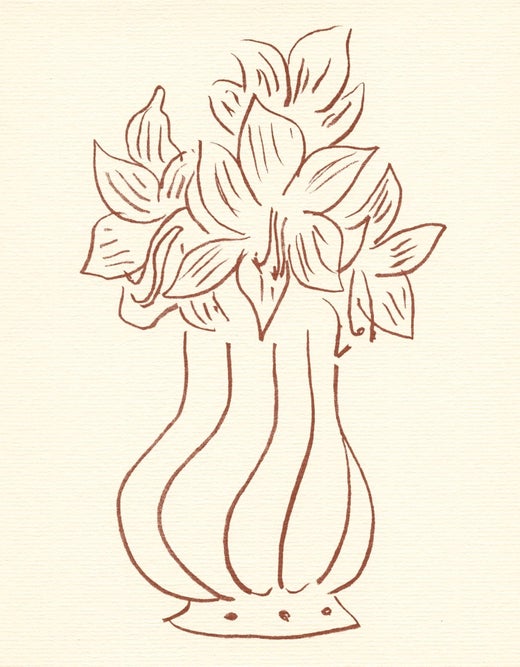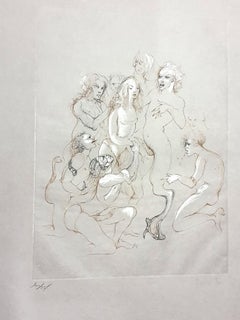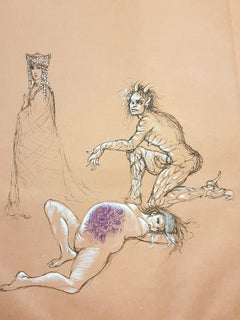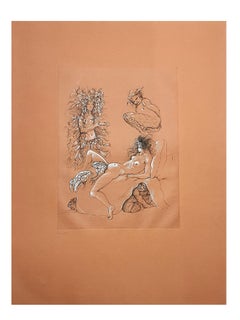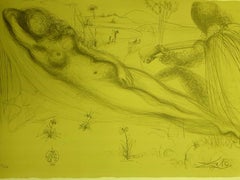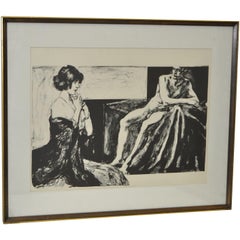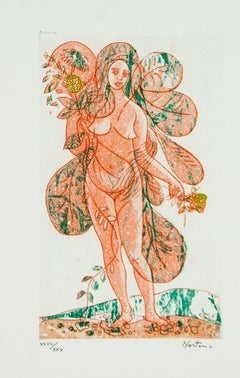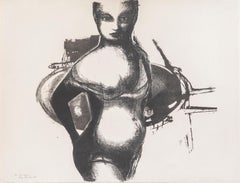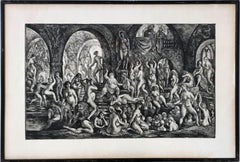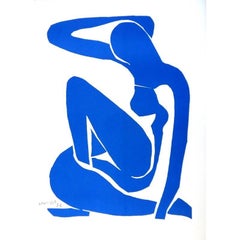
After Henri Matisse - Blue Nude
View Similar Items
Want more images or videos?
Request additional images or videos from the seller
1 of 7
(after) Henri MatisseAfter Henri Matisse - Blue Nude
Price:$1,541.33
About the Item
- Creator:(after) Henri Matisse (French)
- Dimensions:Height: 29.93 in (76 cm)Width: 22.05 in (56 cm)Depth: 0.04 in (1 mm)
- Medium:
- Movement & Style:
- Period:
- Condition:
- Gallery Location:Collonge Bellerive, Geneve, CH
- Reference Number:1stDibs: LU16121990243
(after) Henri Matisse
Henri Matisse was born on December 31, 1869, in Le Cateau-Cambrésis, France. At 22, he had given up studying law in Paris to pursue painting. He had briefly studied art at the Académie Julian and Ecole des Beaux-Arts with Gustave Moreau. At 32, Matisse exhibited at the Salon des Indépendants in Paris, where he met Maurice de Vlaminck, who with Matisse would eventually lead the Fauve art movement. Matisse's work was included in the 1913 Armory Show in New York, and throughout the 1910s and into the 1920s, his work began to find collectors around the world. Throughout the 1920s and 1930s, he divided his time between Paris and southern France, producing paintings, sculpture, lithographs, and etchings. Like many avant-garde artists in Paris, Matisse was receptive to a broad range of influences, particularly 'primitive' art, Near Eastern decorative art, African masks and sculpture, impressionist color, cubism, and the paintings of Paul Cezanne. The artist's images of the human face and figure -rendered in fluid lines and flat fields of color- typify these influences. Matisse argued for the prominence of instinct in art production, believing that an artist should not have complete control over color and form. He died on November 3, 1954, in Nice.
About the Seller
4.9
Platinum Seller
Premium sellers with a 4.7+ rating and 24-hour response times
Established in 2015
1stDibs seller since 2015
961 sales on 1stDibs
Authenticity Guarantee
In the unlikely event there’s an issue with an item’s authenticity, contact us within 1 year for a full refund. DetailsMoney-Back Guarantee
If your item is not as described, is damaged in transit, or does not arrive, contact us within 7 days for a full refund. Details24-Hour Cancellation
You have a 24-hour grace period in which to reconsider your purchase, with no questions asked.Vetted Professional Sellers
Our world-class sellers must adhere to strict standards for service and quality, maintaining the integrity of our listings.Price-Match Guarantee
If you find that a seller listed the same item for a lower price elsewhere, we’ll match it.Trusted Global Delivery
Our best-in-class carrier network provides specialized shipping options worldwide, including custom delivery.More From This Seller
View AllLeonor Fini - Orgy - Original Handsigned Lithograph
By Leonor Fini
Located in Collonge Bellerive, Geneve, CH
Leonor Fini - Orgy - Original Handsigned Lithograph
Circa 1982
On colored paper
Handsigned and Numbered
Edition: 275
Dimensions: 69 x 52.5 cm
Category
1980s Modern Nude Prints
Materials
Lithograph
Leonor Fini - Pregnant - Original Handsigned Lithograph
By Leonor Fini
Located in Collonge Bellerive, Geneve, CH
Leonor Fini - Pregnant - Original Handsigned Lithograph
Circa 1982
On colored paper
Handsigned and Numbered
Edition: 275
Dimensions: 69 x 52.5 cm
Leonor Fini is considered one of the most important women artists of the mid-twentieth century, along with Leonora Carrington, Frida Kahlo, Meret Oppenheim, Remedios Varo, and Dorothea Tanning – most of whom Fini knew well. Her career, which spanned some six decades, included painting, graphic design, book illustration, product design (the renowned torso-shaped perfume bottle for Schiaparelli’s Shocking), and set and costume design for theatre, ballet, opera, and film. In this compellingly readable, exhaustively researched account, author Peter Webb brings Fini’s provocative art and unconventional personal life, as well as the vibrant avant-garde world in which she revolved, vividly in life.
Born in Buenos Aires in 1907 (August 30 – January 18, 1996, Paris) to Italian and Argentine parents, Leonor grew up in Trieste, Italy, raised by her strong-willed, independent mother, Malvina. She was a virtually self-taught artist, learing anatomy directly from studying cadavers in the local morgue and absorbing composition and technique from the Old Masters through books and visits to museums.
Fini’s fledging attempts at painting in Trieste let her to Milan, where she participated in her first group exhibition in 1929, and then to Paris in 1931.
Her vivacious personality and flamboyant attire instantly garnered her a spotlight in the Parisian art world and she soon developed close relationships with the leading surrealist writers and painters, including Paul Eluard, Salvador Dali, Man Ray, and Max Ernst, who became her lover for a time. The only surrealist she could not abide because of his misogyny was André Breton. Although she repeatedly exhibited with them, she never considered herself a surrealist. The American dealer Julien Levy,
very much impressed by Fini’s painting and smitten by her eccentric charms, invited her to New York in 1936, where she took part in a joint gallery exhibition with Max Ernst and met many American surrealists, including Joseph Cornell and Pavel Tchelitchew. Her work was included in MoMA’s pivotal Fantastic Art, Dada and Surrealism exhibition, along with De Chirico, Dali, Ernst, and Yves Tanguy.
In 1939 in Paris she curated an exhibition of surrealist furniture for her childhood friend Leo Castelli for the opening of his first gallery.
Introductions to her exhibition catalogues were written by De Chirico, Ernst, and Jean Cocteau.
A predominant theme of Fini’s art is the complex relationship between the sexes, primarily the interplay between the dominant female and the passive, androgynous male. In many of her most powerful works, the female takes the form of a sphinx, often with the face of the artist. Fini was also an accomplished portraitist; among her subjects were Stanislao Lepri...
Category
1980s Modern Nude Prints
Materials
Lithograph
Leonor Fini - Toads - Original Handsigned Lithograph
By Leonor Fini
Located in Collonge Bellerive, Geneve, CH
Leonor Fini - Toads - Original Handsigned Lithograph
Circa 1982
On colored paper
Handsigned and Numbered
Edition: 275
Dimensions: 69 x 52.5 cm
Category
1980s Modern Nude Prints
Materials
Lithograph
Salvador Dali - Serenade - Lithograph
By Salvador Dalí
Located in Collonge Bellerive, Geneve, CH
Salvador Dali - Serenade - Original Handsigned Lithograph
Dimensions: 51 x 71 cm
1970
Signed in pencil and numbered
Edition : /CXX
References : Field 70-8
Category
1970s Surrealist Nude Prints
Materials
Lithograph
Salvador Dali - At The Beach - Lithograph
By Salvador Dalí
Located in Collonge Bellerive, Geneve, CH
Salvador Dali - At The Beach - Original Handsigned Lithograph
Dimensions: 51 x 71 cm
1970
Signed in pencil and numbered
Edition : /CXX
References : Field 70-8
Category
1970s Surrealist Nude Prints
Materials
Lithograph
Leonor Fini - Satyr - Original Handsigned Lithograph
By Leonor Fini
Located in Collonge Bellerive, Geneve, CH
Leonor Fini - Satyr - Original Handsigned Lithograph
Circa 1982
On colored paper
Handsigned and Numbered
Edition: 275
Dimensions: 69 x 52.5 cm
Category
1980s Modern Nude Prints
Materials
Lithograph
You May Also Like
Gerald Gooch (American, 20th c.) "Bedside Manner" Original Lithograph c.1963
By Gerald Gooch
Located in San Francisco, CA
Vintage lithograph by Gerald Gooch c.1965.
Signed and dated lower right.
Limited edition. This is number 15/20.
Dimensions 25 1/2" x 19". Frame dimensions 33" x 27".
Very good...
Category
Mid-20th Century Abstract Impressionist Figurative Prints
Materials
Lithograph
Leaves of Love-Orange Lady lithograph by Alessandro Nastasio
By Alessandro Nastasio
Located in Paonia, CO
Leaves of Love-Orange Lady is an original signed limited edition (XXII/ XXX) lithograph by Alessandro Nastasio showing a full figured orange colored nude holding flowers in each hand standing with her bare feet on the ground. She appears to have wing like orange and green leaves surrounding her.
Paper size 18.25 x 11.75 image 13 x 7.75 in very good condition.
Alessandro Nastasio was born in Milan in 1934. In 1952 he followed the “free school of the nude” led by Aldo Salvatori. In 1960 he attended the Atelier of Giorgio Upilio where Giacometti, Lam, Fontana, De Chirico worked and where he had the opportunity to study the themes of the inspiring myths. He worked at the MAF foundry with the master Tullio Figini who shared the secrets of the lost wax Renaissance fusion and where he met the masters Crocetti, Manfrini, Manzu , Minguzzi, Fabbri,. He then moved on to Quinto de Stampi at the De Andreis foundry where Marino Marini, Pomodoro, Rudy Wach, Strebelle, Negri and Rosental operated. A regular reader of the great sapienzal texts of antiquity, he trained in particular on the Bible which he illustrated with woodcuts, aquatints, etchings and linocuts, especially the Song of Songs, the book of Ecclesiastes and several pages of the Gospels He also drew his inspiration from the philosophical-religious tradition of the Eastern world through the reading of Rig-Veda, Upanisad and the Matnavi of Rumi. In 1966-67 he obtained the chair at the Academy of Fine Arts of Brera and for thirty years he devoted himself to the teaching of Art Education in various schools.
Nastasio created works both pictorial and plastic in collaboration with famous architects such as: Figini and Pollini, De Carli, Gardella, Faranda, Selleri, Ponti. His great talent soon came to the attention of various art dealers: first Max G...
Category
20th Century Abstract Impressionist Nude Prints
Materials
Lithograph
Girl
By Reg Butler
Located in Llanbrynmair, GB
’Girl’
By Reginald Butler
Medium - Lithograph
Signed - Yes
Edition - AP
Size - 650mm x 490mm
Date - 1968
Colour of print may not be accurate when viewed on a monitor.
Reginald Cot...
Category
Mid-20th Century Abstract Figurative Prints
Materials
Lithograph
$1,164
Untitled: Dancing Nudes
By Vladimir Szabo
Located in New York, NY
Vladimir Szabo (Hungarian 1905-1991), " Untitled: Dancing Nudes", Figurative Lithograph, 15 x 23.75, Late 20th Century
Colors: Black and White
A pupil o...
Category
Late 20th Century Abstract Figurative Prints
Materials
Lithograph
Women Seated (Edition 1/1)
By Cathy Migliaccio
Located in New York, NY
Cathy Migliaccio (American 1950-2003), "Women Seated" Edition 1/1, Abstract Figurative Lithograph numbered and signed in Pencil, 12.75 x 9.50 In Matte (18.63 x 15.50 In Frame), Late 20th Century, 1972
Colors: Black and White
Cathy Miglaccio was an artist originally hailing from New Jersey and later the Bronx, New York City. Having graduated with a Masters in Art Education, she later taught Art respectively in Baltimore, MD and Fredonia, NY and later at The Holy Cross School in Rumson, NJ. While there, she also served as Chairwoman for the Holy Cross Antique...
Category
1970s Abstract Figurative Prints
Materials
Lithograph
'Chamonix' Mid-Century Hand Signed Original Lithograph.
By Joan Gardy Artigas
Located in Cotignac, FR
Mid-Century original lithograph entitled " Chamonix " hand signed by Joan Gardy Artigas and numbered 12/75 on arches vellum rag paper from the 1966-70 edition. Presented in period 19...
Category
Mid-20th Century Abstract Figurative Prints
Materials
Printer's Ink, Rag Paper, Lithograph
